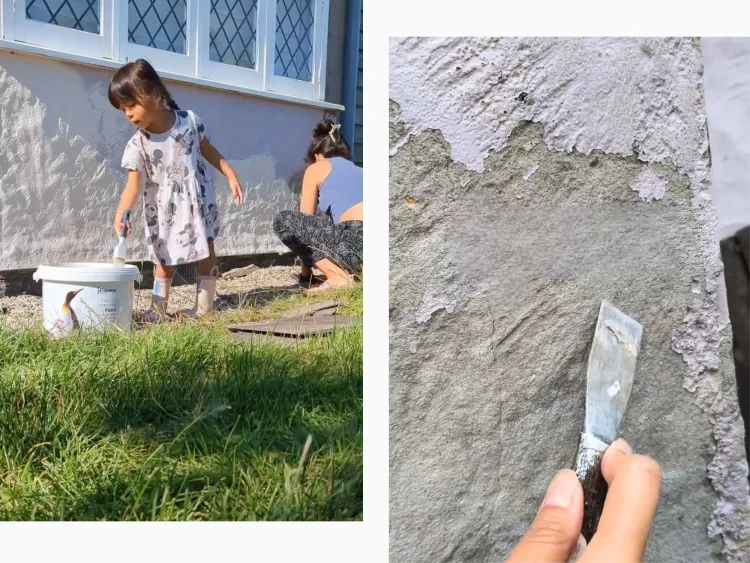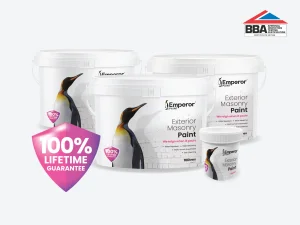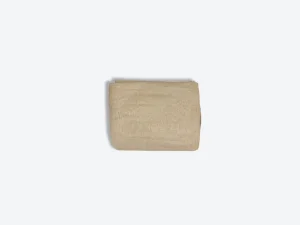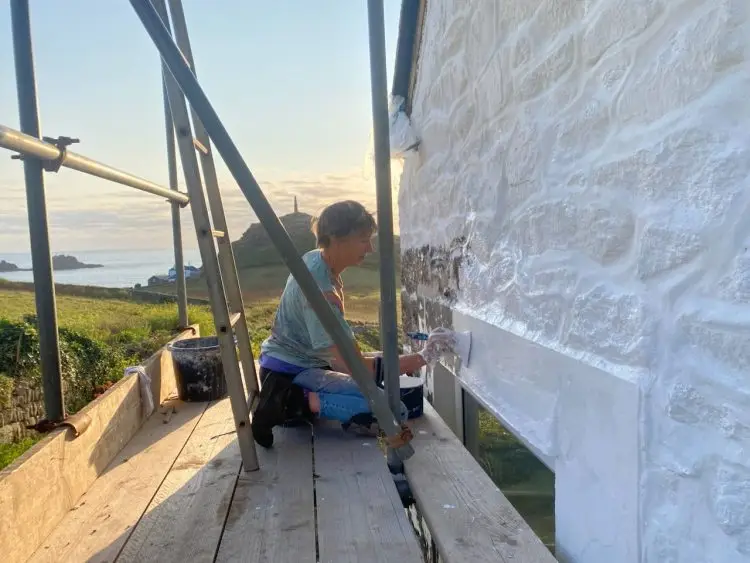Emperor Stories: How Susie Kept Her Cottage Dry

When Susie and her husband moved into their 17th century cottage in Hertfordshire, they were instantly drawn to its charm.
But like many older homes, the cottage’s character came with challenges. Years of the great British weather had taken its toll, with peeling paint and signs of damp beginning to show. Wanting to address the issues and protect the home for the future, she decided it was time to take action.
In this edition of Emperor Stories, we sat down with Susie to discuss how she approached the project, the results and her tips that might help you if you’re planning to paint the outside of your home.
Falling In Love With The Cottage
Tucked away in a small Hertfordshire village, Susie’s 17th century thatched cottage is the kind of home that immediately draws you in.
Inside, it’s a maze of low beams, tiny doors and crooked staircases that all come with a unique charm and history.
‘We fell in love with our cottage as soon as we saw the view from the kitchen’, Susie said.
‘We love that the cottage is completely unassuming from the front door, but opens up into a large garden with views of surrounding fields that makes you feel like you are in the middle of nowhere (but you’re walking distance to three pubs and a 45 min train from London).’
As with many homes of its age, the years had left their mark, along with some earlier repairs that hadn’t been the best for the property.
‘The cottage was rendered in cement, which should have been lime. The paint was peeling in several areas and there were damp issues.’
‘We also recently renovated parts of the cottage, which meant that parts of the exterior were completely exposed, so we were keen to repaint the cottage as soon as possible to protect those parts of the house.’
Wanting to get the cottage ready for the years ahead, Susie began the process of not only addressing the underlying moisture issues but also give the exterior the love and attention it deserved.

Doing What’s Best For The Cottage
A key for Susie was to do more than cover up the problems. Addressing the damp without creating new issues was essential.
The cement render applied to the cottage before she moved in had over the years started to trap moisture rather than let it escape. Removing this isn’t always an option or the best solution. Guidance from conservation bodies notes where cement render remains sound, it can often be best to manage moisture rather than remove the render entirely, helping avoid unnecessary damage to the building.
For Susie, that meant finding a way to keep rainwater out without compromising the breathability of the render.
‘We were eager to find a masonry paint that would allow the house to breathe better and repel water to reduce the damp and protect the exterior from weather damage.’
‘Because our walls were cement, we wanted to do the best we could for the long term durability of the cottage given that situation.”
‘Emperor Masonry Paint came up across all of our searches as a top performing masonry paint. Its ability to repel water and high breathability were the key properties for us. We were impressed when we learned about how the paint is super hydrophobic and how it has a breathability similar to limewash, and the technology behind it.’
Laying The Groundwork
Susie and her husband set out to take on the work themselves (with a little helper).
‘We cleaned the walls with a pressure washer and sponge and then applied Emperor Exterior Primer to the unpainted surfaces from the renovation’.

They took a steady, hands-on approach, painting section by section when time and weather allowed. It’s a strategy that works brilliantly well for large projects, allowing you to break the work into smaller, more manageable chunks.
‘The paint was very easy to apply with the basic gear we already had at home. We completed two coats, slowly painting the house each weekend we had free.’
It’s a reminder that with patience and a plan of action, even bigger exterior projects are achievable when tackling the work yourself.

Choosing A Colour
Like any decorating project, deciding on the right colour was an important step. After testing a few options, Susie chose Mushroom, a soft warm tone.
‘We chose the colour Mushroom after purchasing a few different tester pots, and we love it. It’s a lovely warm colour and has significantly brightened up our cottage.’
Her choice reflects a growing shift among homeowners moving away from colour trends and taking a longer-term view. More people are choosing colours that feel personal and work for their home and its setting for years to come.

Susie’s Tops Tips For You
So, what would Susie’ top three pieces of advice be for anyone thinking of repainting their home?
1. ‘The cheapest paint is not always the best. Always read up on the product to make sure it’s quality and long lasting. Even if the tin says it’s breathable, check the details.’
2. Preparation really is key, always clean the walls before you start, prime as necessary and invest in good quality tools. We used what we had around the house but it probably would have been more efficient to have more durable brushes and rollers given our walls were not smooth. We found the rollers we bought off Amazon fell apart easily.’
3. You don’t need a professional to paint your house, you’ll save a lot of money doing it yourself, even if it takes longer and it can still look great!’

Ready to start your own transformation? Order your sample of Emperor Masonry Paint and take the first step toward keeping your home dry and protected for years to come.











